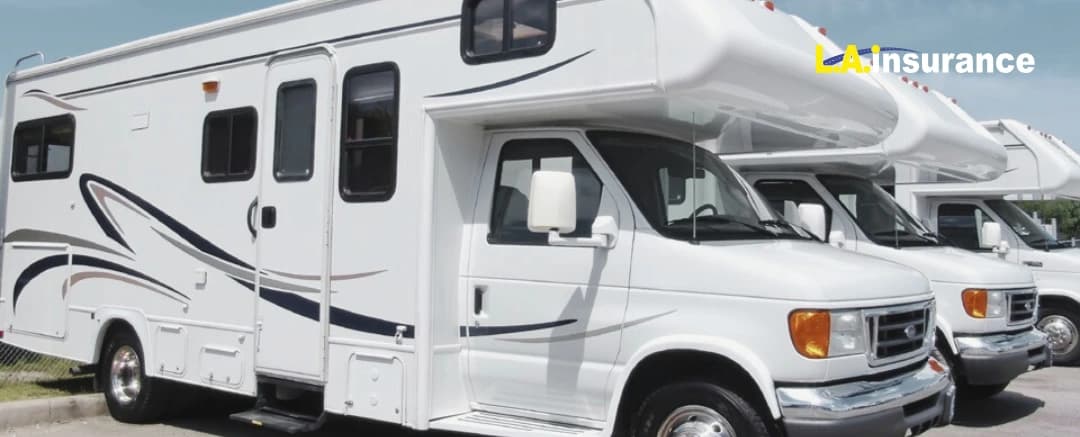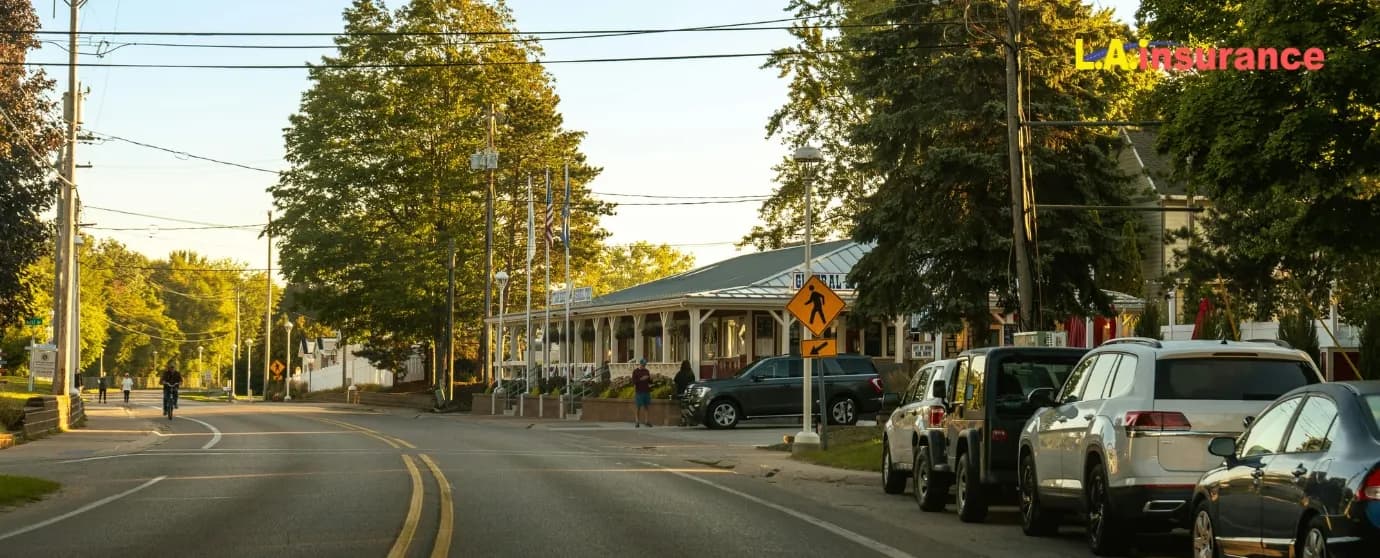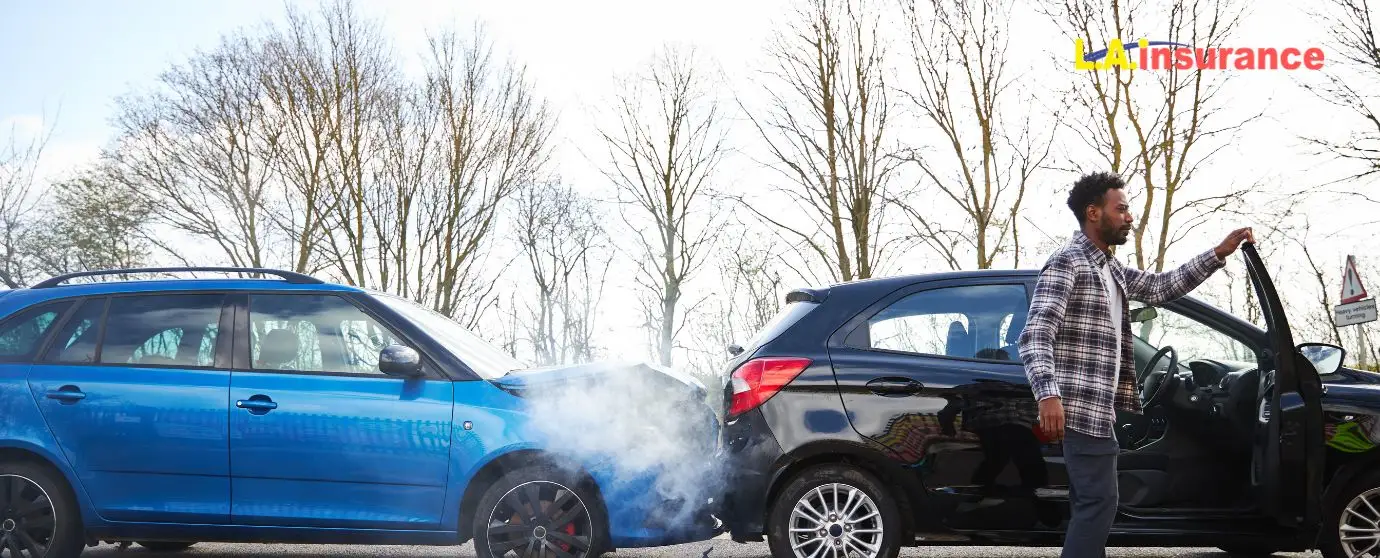
Publish Date: 13-05-2025
RV & Motorhome Insurance
Last Updated: 15-12-2025
How Much Does RV Insurance Cost?
RV ownership has grown by 62% in the last 20 years. Perhaps this is because more and more people want a break from their busy, chaotic modern lives and seek refuge in nature. In this case, staying and traveling in a recreational vehicle has become the first choice for many.
According to Consumer Affairs, 11.2 million households now own RVs, 22% of whom are young RVers aged 18 to 34. Due to the high demand in the RV industry, RV insurance has also become a crucial consideration for owners, regardless of legal requirements.
And one of the most frequently asked questions among new RV owners is: How much do they have to pay for RV insurance? Well, it depends. Because every RVer is different. No one can tell you the exact number unless you provide a few details about you and your RV.
Several factors influence the price, including your RV's model, year, manufacturer, and type (e.g., motorhome or travel trailer). Additionally, your driving history, choice of insurance company, full-time vs. part-time RV usage, and even your zip code affect the cost of RV insurance.
As per our research and estimates, RV insurance costs typically range between $200 and $3,000 per year. On average, most RV owners pay around $125 per month or $1,500 annually. Keep reading this article to learn everything about RV and motorhome insurance costs.
Average RV Insurance Costs in 2025
The insurance cost for an RV in 2025 varies a lot. As we said, depending on the type of RV you have, your annual cost could range from $200 to $3000. The national average for RV insurance stands around $1,500 per year or $125 per month.
However, you’re fortunate if you own a smaller trailer; you can expect to pay as low as $200. Others, especially those driving a luxurious Class A motorhome, may pay up to $3,000 or more.
Many things influence your final price, such as your vehicle type, how you use it, where you live, and your coverage options. Also, a clean driving history or grabbing an insurer discount could save you hundreds.
For instance, if you frequently travel and stay in a campsite that is susceptible to severe weather or theft, there’s a high chance that you’ll receive a much higher quote than those who camp in a safer location.
It’s not that difficult to find out how much it will cost to insure your RV. It takes even less than a minute to get an RV insurance quote. We make sure to offer amazingly cheap RV and motorhome insurance for everyone. Simply share a few details about your recreational vehicle with L.A. Insurance. Let us know where you live, your driving history, RV type, and how you use and store it. Someone from our team will contact you promptly.
Full-Time RV Insurance Costs
A full-time RV means using your RV as your permanent residence. Because of this, insurance carriers classify it as a home, requiring more coverage options.
So, how much does full-time RV insurance cost? In 2025, full-time RV insurance ranges from $1,500 to $4,000 per year. The reason for the higher rates is that insurers treat full-time RV owners similarly to traditional homeowners when determining coverage.
If you have been using your RV as your primary residence or spending more than 150 nights per year (more than 6 months a year), you need broader RV insurance coverage, including:
- Liability coverage
- Personal injury protection/ Medical payment coverage
- Comprehensive coverage
- Collision coverage
- Personal belongings coverage
- Full-timer’s liability insurance
- Vacation liability insurance
- Roadside assistance
A full-time policy often includes protection for contents, campsite liability, emergency expenses, and medical bills if someone is injured near your RV. It also protects your RV from theft, vandalism, fire, natural disasters (e.g., hail, flood risks, earthquake, water damage), and traffic accidents.
Due to this extensive coverage, a full-time RVer pays nearly double compared to a recreational user. However, part-time RV insurance costs much less. Recreational users who camp only a few weeks each year often pay between $300 to $800 annually.
Average Insurance Costs by RV Type
Not all RVs cost the same to insure. Simply put, the bigger and fancier your recreational vehicle, the higher the insurance premiums.
Smaller RVs like campervans (class B motorhome) or conversion vans cost much less to insure than massive class A motorhomes. Besides, if your RV is towable rather than a motorhome, you’ll face a cheaper rate.
Insurance companies usually consider factors like the RV’s chassis, market value, size, and usage frequency. Check the following table, which summarizes the average cost of RV insurance by vehicle type:
RV Type | Average Cost Per Month | Average Cost Per Year |
Travel Trailer | $15 - $50 | $180 - $600 |
Fifth-Wheel Trailer | $25 - $85 | $300 - $1,020 |
Teardrop Camper | $12 - $42 | $144 - $504 |
Pop-Up Camper | $20 - $46 | $240 - $552 |
Class A Motorhome | $85 - $250 | $1,020 - $3,000 |
Class B Campervan | $42 - $85 | $504 - $1,020 |
Class C Motorhome | $50 - $125 | $600 - $1,500 |
Truck Camper | $17 - $67 | $204 - $804 |
As you can see from the table, towable RVs like trailers are cheaper to insure. In contrast, self-driving motorhomes, especially Class A, come with a higher insurance rate.
But, how much exactly does it cost to insure a motorhome? The answer is motorhome insurance in 2025 costs $504 to $3,000 per year, while travel trailer insurance is much cheaper, ranging from $180 to $600 per year.
Pro Tip: According to Consumer Affairs, 31% of RV owners are first-time buyers. If you're concerned about your insurance budget, consider purchasing an RV that aligns with both your lifestyle and financial situation. In such cases, opting for a smaller trailer or a pickup truck camper instead of a luxury bus can be a more budget-friendly choice for insurance.
Factors Influencing the Cost of RV Insurance
To determine the exact premium for your RV insurance, insurers use a few key factors. Each of these factors is different for every individual. For instance, a person who uses a luxury home on wheels such as “Foretravel Motorcoach Presidential Series” will certainly pay a significantly higher rate than a person who uses a simple, low-cost travel trailer. Here are the main factors that shape your RV insurance rates:
Type of RV
The type of RV you own has a major impact on your insurance cost.
If you use a large and luxurious motorhome, it will cost you much more than insuring a simple trailer or campervan. That’s because bigger rigs have more cargo, expensive parts like a refrigerator, roof, safety glass, and a complex chassis.
The two types of RVs are:
- Motorhomes (self-powered, you drive them)
- Towables (they need to be pulled by another vehicle)
Each type affects insurance costs differently.
Motorhomes
Motorhomes are RVs that you can drive without needing another truck or pickup truck to tow. They are bigger and more expensive to insure because they combine living space and motor power. You have to have minimum liability insurance for your motorhome.
Here are the main types of motorhomes:
- Class A Motorhomes: Large, luxurious, often built on a bus or commercial truck chassis. It might cost you over a million dollars to purchase. And therefore, you’ll face the highest insurance rates, often ranging from $1,020 to $3,000 per year. A high-value motorhome means higher insurance premiums, and a full coverage policy is a must for it, which includes both collision and comprehensive insurance.
- Class B Campervan: Smaller and more nimble, built on a van chassis. It’s also called a conversion van, which has sleeping and cooking areas. The average insurance cost for a campervan is between $504 and $1,020 per year. This RV insurance is cheaper due to its smaller size and lower replacement cost.
- Class C Motorhomes: Mid-sized RV with a distinct cab-over design. It offers a good mix of comfort and driving ease. To maintain insurance for this sort of RV, you’ll have to pay around $600 to $1500 per year.
Towables
Towables are RVs you attach to another vehicle and pull along the road. They don’t have their own engines, so they cost much less to insure compared to motorhomes.
Here are the main types of towables:
- Travel Trailer: The most popular kind of trailer. Its sizes vary from small teardrops to large family units. It’s quite cheaper and easier to insure because it’s treated like a cargo attachment. And the average insurance cost for a travel trailer is between $180 and $600 per year.
- Fifth Wheel Trailer: A Bigger and heavier trailer. It connects to a truck bed with a fifth-wheel hitch. It has spacious living quarters and is perfect for long vacations. Due to its size and property damage risks, the average insurance cost is slightly higher and ranges from $300 to $1,020 per year.
- Pop-Up Camper: Lightweight trailer. It is good for short trips and weekend camping as it folds down for easy towing. It offers limited amenities and carries a small risk exposure. You might pay between $240 to $552 per year as the average insurance cost.
- Teardrop Camper: Tiny and lightweight trailer. It provides basic sleeping quarters. It can be towed easily by most pickup trucks or even cars. You may find it very affordable to insure because of the minimal property value. The average insurance cost varies from $144 to $504 per year.
- Truck Camper: Mounted directly into the bed of a pickup truck. It offers small living quarters. If you’re a solo traveller, it’s perfect for you. And the average insurance cost for a truck camper usually ranges from $204 to 804 per year. The cost and insurance coverage depend partly on both the camper and the truck’s value.
Types of RV Insurance Coverage You Choose
The insurance coverage options you pick can change your insurance premiums dramatically. Besides, if you’re financing your RV, the lenders require you to maintain both comprehensive and collision insurance, which will significantly raise your costs.
Usually, there are two parts of RV insurance coverage from which you can choose your required coverage: Standard and additional coverage options.
Standard RV Coverage Options
- Liability insurance: It’s legally required for an RV or any motorized recreational vehicle. It covers bodily injuries or property damage you cause to others.
- Comprehensive and collision coverage: Covers your RV against accidents, theft, fire, vandalism, natural disaster (e.g., floods, rain, hail, storm), vehicle accidents, collision with another object, vehicle, or animal.
- Medical payment coverage: Covers you and your passengers’ injury costs after an accident.
- Uninsured/Underinsured motorist: Helps if the at-fault driver has no insurance or not enough insurance.
These basic coverage options are legally required in many states for motorized RVs. However, beyond these mandatory coverages, there are additional options to consider. Keep in mind that while more coverage extends your protection, it also increases your RV insurance rate.
Additional RV Insurance Coverage Options
- Roadside assistance: Helps with towing, flat tires, fuel delivery, or jumpstart.
- Vacation liability RV insurance: Protects you if someone gets hurt at your campsite.
- Total loss replacement: Replaces your RV if it’s totaled, not just the depreciated value.
- Emergency expense: Covers hotel, meals, or transport if your RV breaks down far from home.
- Pet insurance: Covers injuries to pets traveling with you.
- Safety glass: Covers the repair or replacement of a broken windshield or window.
Although the right RV insurance can protect you in many situations, it doesn’t always guarantee reimbursement for every type of RV damage. Your insurer may apply the terms and conditions to your policy and restrict coverage depending on how the damage occurred.
Please keep in mind the following exclusions:
- Wear and tear from age and usage
- Damage from pets or animals inside
- Damage from using your RV for business purposes without extra coverage
- Intentional damage
- Damage during illegal activities (like driving under the influence)
How You Use Your RV
When it comes to deciding your RV insurance rate, how you use your RV matters a lot.
- Full-time RVers need comprehensive, collision, and personal belongings coverage, and full-timers’ liability insurance similar to home insurance. Therefore, they are more likely to face higher RV insurance costs.
- In contrast, part-time RVers (vacationers) pay much less because they drive less.
If you use your RV full-time, your insurance policy must cover things like:
- Vacation liability at campsites
- Personal injury on your lot
- Repairing or replacing contents after accidents
The more you use your RV, the greater the risk and the higher the insurance premium you'll face.
Where You Store Your RV
The storage location for your RV influences your premium as well.
If you park your RV:
- Inside a garage: Lower cost
- Outside at home: Medium cost
- At a storage facility: Depends on the security level
Parking in risky areas increases theft, vandalism, or weather damage risks, such as hail or flood. That’s why insurance companies usually want to know this information for risk assessment, which helps them offer you an RV insurance quote you truly deserve.
For cheaper RV insurance, we recommend storing your RV at a secure place.
Your Driving Record
A clean driving record can save you a lot of money and help you get a cheaper RV insurance quote. An RV driver with no history of accidents or any traffic violations indicates a low risk of filing a claim for collision or comprehensive coverage. That’s why insurers charge them a lower insurance rate.
Here’s what insurance companies look closely at:
- History of accidents (e.g., single at-fault accident)
- Speeding tickets
- DUI offenses (driving under the influence)
- License suspension or revocation
If you have no history of traffic violations or car crashes, you could qualify for a responsible driver insurance discount. And the bad driving record could do the complete opposite.
Your Driving Experience
If you’re a first-time RV driver, you may face a higher rate due to a lack of driving experience.
Experienced RV drivers, on the other hand, especially those with safety course certification, can save up to 20%. That’s why at L.A. Insurance, we recommend that our drivers complete a defensive driving course to lower insurance costs.
Credit Score
Your credit score influences your RV insurance rates too.
In most states, a higher credit score leads to cheaper insurance quotes. However, if you live in one of the following states, your credit score won’t be factored into RV insurance rates:
- California
- Massachusetts
- Hawaii
- Michigan
- Maryland
- Utah
- Oregon
However, the insurers in those states that allow for consideration of credit score while determining your RV insurance premium may check your payment history, credit utilization, length of credit history, and recent credit inquiries. So, if you want to ensure affordable RV insurance cost, maintain a good credit score/history.
Claim History and Deductible Amount
Insurance companies check if you’ve made past claims. If you have a history of claims for at-fault RV accidents or other damages, it’s likely that you’ll face a higher insurance rate. To keep your rate down, don’t apply for unnecessary claims.
Another key factor that affects RV insurance cost is your chosen deductible amount. If you choose a higher deductible amount, you’ll enjoy lower premium.
To easily comprehend this, see the following example:
- $1,000 deductible = lower monthly cost
- $250 deductible = higher monthly cost
Insurance Discounts
Grabbing available RV insurance discounts can slash your cost by 10% to 30%.
Popular discounts:
- Multi-policy bundling
- Safe driver reward
- Paid in full discount
- Storage period discount during off-seasons
- Membership in a club like the Family Motor Coach Association.
Location and Weather Risk
Where you live matters. Because insurers use your zip code to assess the possible risks in your area, including theft, vandalism, or weather hazards.
If you live in a state with severe weather, like Mississippi, Texas, Florida, or Oregon, you’ll have a higher premium. Areas prone to natural disasters, hail, floods, or high crime rates also raise your insurance expenses.
Age and Condition of the RV
The age of your recreational vehicle plays a big role in how much you pay for RV insurance. Older RVs actually come with higher risks. Parts wear down, and wear and tear become more common over time. A weak roof, damaged awning, outdated chassis, or old refrigerator can lead to costly repairs after an accident.
Insurance providers know this. That’s why premiums for older RVs can sometimes be higher than for newer ones. However, if your older RV is in great condition, you might still score better rates. It would be useful in reducing RV insurance costs if you’re keeping up with regular maintenance, replacing worn-out parts, or if you can show proof of warranty.
Insurers usually look closely at the physical damage coverage needs for aging rigs. Cracks, rust, flat tire risks, and damaged safety glass all increase claim chances. And the higher the claim possibility, the higher the insurance premium.
In addition to age, the condition of your RV also matters. An RV that’s well-loved and cared for will always be cheaper to insure than a neglected one.
Market Value and Depreciation
The market value of your RV today also drives your insurance cost.
New RVs have a higher market value. So, they cost more to replace or repair after a collision, theft, accident, or natural disaster. That’s why newer RVs usually have higher premiums. Because if anything goes too bad, the insurer may have to pay for total loss replacement.
Over time, your RV goes through depreciation. This means the RV's replacement value drops as it ages. Here’s how depreciation affects your insurance:
- If your RV is totaled, the insurer may only pay the depreciated value, not the original price.
- If you want full protection, you might buy gap coverage or replacement costs options.
- If you settle for actual cash value coverage, your premium will be lower, but your payout after a loss will also be lower.
Insurance Provider Differences
You won’t get the same rate from every insurance company. Because every insurance carrier has its own way of setting rates. They assess risk differently, offer different coverage options, and provide various insurance discounts.
For example:
- Some insurers reward low-mileage RVers more than others.
- Others may offer a special deal if you’re a member of the family motor coach association.
You should always compare at least 3-5 insurance providers to find the best deal. If needed, you can find an agent to receive your quote from our affordable insurance agency in Michigan. We operate in Colorado, Texas, Florida, Arizona, Georgia, and Nevada.
How Much Is RV Insurance in Michigan?
Michigan is one of the top states for RV ownership and purchases. In fact, the residents of the Great Lake State spend over $150 million a year on RV sales and services. But how much do they pay for RV and motorhome insurance?
Michigan RV insurance costs can range between $700 and $4,500 per year. But price can vary depending on your RV type, coverage needs, and how often you use it.
If you have a luxury RV bus, you are more likely to pay one of the highest rates for RV insurance in the United States. Also, full-time RVers usually pay more because they need full-timer coverage. On the other hand, weekend warriors and DIY van owners commonly stick with basic short-term use coverage.
Michigan's minimum RV insurance requirements are strict. You must carry at least:
- $50,000 for bodily injury per person
- $100,000 for bodily injury per accident
- $10,000 for property damage per accident
If you’re financing your recreational vehicle or using it for commercial purposes, you will face much higher rates. If you’re having difficulties receiving cheaper insurance in Michigan for your motorhome or travel trailer, you can always contact L.A. Insurance. Dial us at (800) 893-9393 to discuss your needs.
How to Lower the Costs of RV Insurance
Lowering your RV insurance cost isn’t that complicated. Here are simple ways to save money:
- Increase your deductible to lower your monthly premium.
- Take a defensive driving course and submit proof to your insurer.
- Bundle your auto insurance and RV insurance with the same company.
- Store your RV in a secure location when not in use.
- Install an anti-theft device and upgrade your safety glass.
- Maintain a clean driving record with no recent accidents or tickets.
- Ask about multi-policy discounts or safe driver rewards.
- Pay your insurance premium annually instead of monthly.
- Shop around and compare insurance quotes every year.
- Join RV clubs like the Family Motor Coach Association for possible savings.
- Limit your RV usage to recreational use (under 150 nights a year), not full-time, if possible.
- Add only necessary coverage options; avoid over-insuring your recreational vehicle.
- Improve your credit score to qualify for better insurance rates.
- Store your RV during the off-season to qualify for storage discounts.
- Choose a smaller, lower-value RV like a campervan or travel trailer.
How Much Does It Cost to Insure an RV: The Bottom Line
The national average cost of RV insurance is $125 per month or $1,500 per year. However, the price can vary significantly depending on your state, RV type, coverage needs, and usage. Recreational vehicle insurance typically ranges from $200 to $3,000 per year. Additionally, costs may differ for each RVer based on factors such as driving history, storage location, chosen deductible, claim history, and credit score.
Related FAQs on RV Insurance Costs
How much does it cost to insure a motorhome in 2025?
Motorhome insurance in 2025 typically costs between $504 and $3,000 per year, depending on your RV class and coverage needs.
What types of insurance do you need for a recreational vehicle?
You must have liability RV insurance for motorized RVs. Besides, based on your usage, you can pick other standard and additional coverages such as comprehensive and collision coverage (required if you’re financing/leasing), uninsured/underinsured coverage, full-timers liability, vacation liability, MedPay, personal injury protection (PIP), total loss replacement, and so on.
How much is RV insurance per month?
On average, RV insurance costs $125 per month. But it could range from $15 to $200 per month based on RV type, insurance coverage, and personal driving history.
Which states have the cheapest RV insurance?
States like Oregon, North Carolina, and Massachusetts offer some of the cheapest RV insurance rates.
How much is RV insurance in Florida?
In Florida, RV insurance costs typically range from $800 to $1,500 per year. If you own a travel trailer, expect to pay around $850 annually. But if you have a motorhome, the insurance generally costs about $1,500 per year.
What’s the cost of RV insurance in California?
The average cost of RV insurance is about $900 to $1200 per year in California. However, if you insure a Class A Motorhome, it will cost more to insure. Also, the cost of RV insurance in California may vary for each individual. Because of your RV type, value, weight, your driving history, how many nights you’ll live in your RV per year, the value of the personal belongings inside your RV, and bundling policies (e.g., RV and auto insurance), can impact the cost.
How much does RV insurance cost in Texas?
Motorhome owners in Texas pay approximately $1,400 per year for insurance. Travel trailer owners, on the other hand, typically pay just under $1,100 annually.
Tag :
RV & Motorhome Insurance
RV insurance








